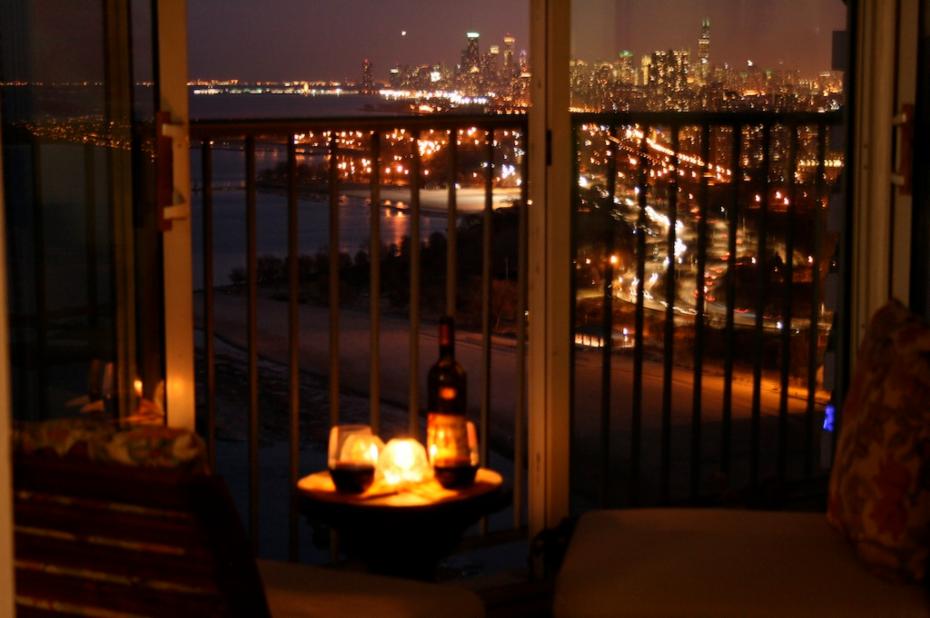

The different ripples also allow oblique views up and down the facade from the various balconies. In working out the balcony contours, Gang conducted view studies of unimpeded sight lines for places of interest.

Here, too, the ledges-9-inch-thick concrete balconies-thin out toward the edge of the cantilever to help drainage. In designing the balconies that extend outward from 2 to 12 feet, Gang thought of them as a concrete topography that would remind Chicagoans of limestone outcroppings along the Great Lakes-only in this case, the rises and falls would extend vertically from the top to the bottom of the shaft. Atop the tower are penthouses, on the 80th and 81st floors, where ceilings go as high as 14 feet. Above, the tower is divided into the hotel, on floors 4 to 18 474 rental apartments, on floors 19 to 52 and 264 condos on the floors above.

The podium itself contains lobbies for both the hotel (a hotelier is to be designated this month) and the apartments, along with retail stores, a ballroom, an indoor pool, and other public spaces. The 180,000-square-foot site on the western edge of Lakeshore East generated a tower-on-a-podium solution that would negotiate the 50-foot drop in grade between Upper Columbus Drive on the west and Harbor Park at the center of the complex on the east. Loewenberg wasn’t worried about Gang’s high-rise experience: He would be the executive architect as well as the client. Since Loewenberg had already enlisted the usual ranking Chicago architects to design portions of his development, including Skidmore, Owings & Merrill as master planners, he claims he was ready for a “young architect who had not done a high-rise before.” Gang, trained at the University of Illinois, Harvard’s Graduate School of Design, and Eidgenössische Technische Hochschule (ETH) in Zurich, offered the proper pragmatic sensibility. Loewenberg, an MIT-trained architect as well as developer, met Gang at a dinner in Chicago following a lecture by Frank Gehry. Naturally, the question arises about how a female architect with a 37-person firm, known for smaller-scale community centers and houses, got to design a 1.9- million-square-foot tower, which cost $300 million in construction. For her part, Gang contends that the building’s orthogonal core reflects Chicago’s grid. Since not all prospective occupants enjoy fitting furniture into irregularly shaped spaces, Gang’s decision to wrap a rippling carapace around a rectilinear poured-in-place concrete frame at Aqua makes sense in terms of construction and marketing. While Goldberg’s scheme integrates the plan with the envelope, wedge-shaped rooms came with the price of admission. Along the river, Aqua’s curvilinear architectural precursor-the cylindrical twin towers of Bertrand Goldberg’s Marina City (1964)-can be glimpsed from many balconies. In addition to the water views on the east, this soigné antidote to Chicago’s straitlaced Modernism looks south to Millennium Park and the Art Institute of Chicago and north to the Chicago River, with the Hancock Center in the distance. Enabled by client Jim Loewenberg of the Magellan Development Group, Jeanne Gang, principal of Studio Gang, conceived the 82-story tower on a podium as part Loewenberg’s Lakeshore East, a 28-acre mixed-used development on the former Illinois Central Railroad yards edging Lake Michigan. Now, Studio Gang has designed Aqua-a Niemeyeresque apartment and hotel tower whose architectonic facade of sensuously swerving, white concrete balconies jumps out from among its stolid brethren. Chicago’s skyscrapers may be famous for their technical achievements and functional expression, but they are often short on pizzazz.


 0 kommentar(er)
0 kommentar(er)
